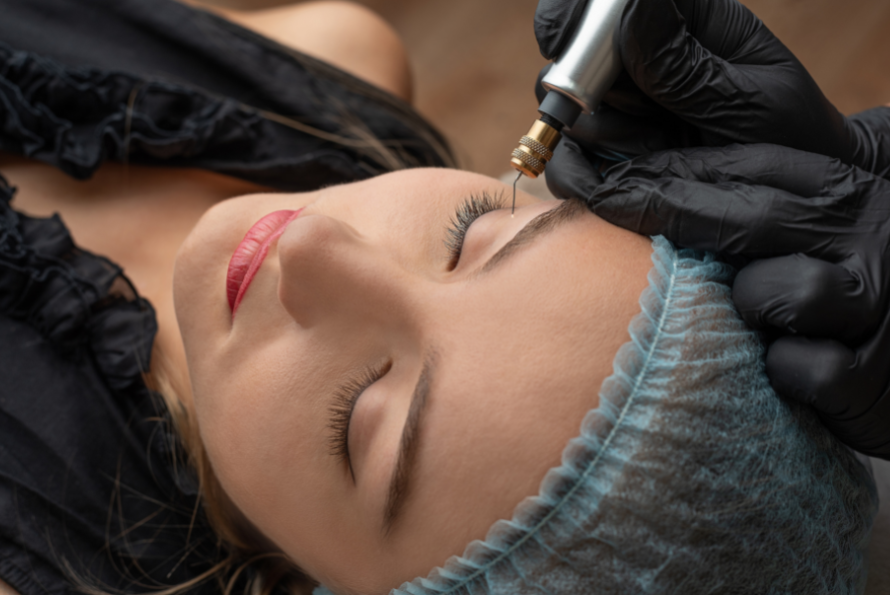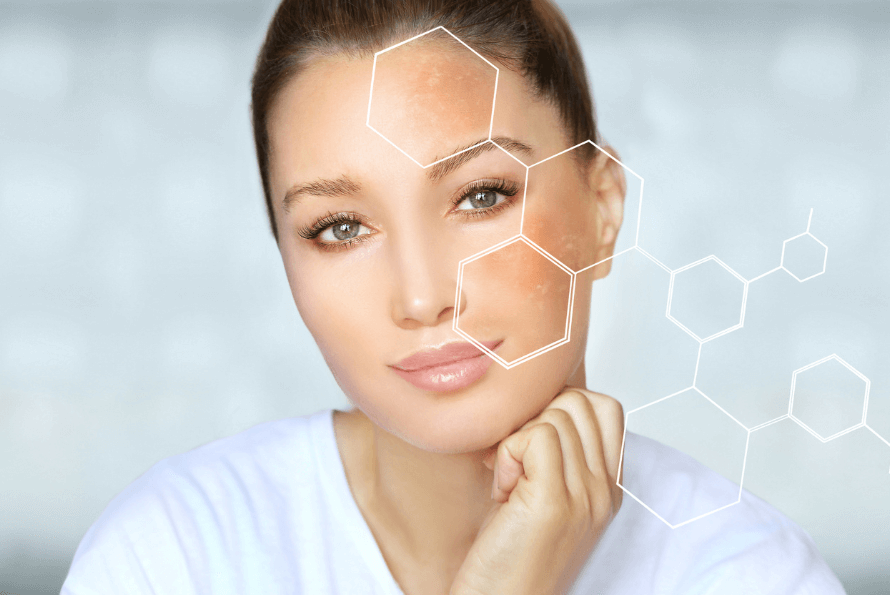
Plasma fibroblast therapy targets fibroblasts. Fibroblasts are cells in the dermis, the skin layer just below your outermost skin layer, that produce collagen and protein and encourage the skin to repair and maintain its firmness.
Skin rejuvenation techniques are improving day by day and new treatment options are emerging. One of these innovations is fibroblast treatment. This treatment method, which has become popular in recent years, is known for being effective in reducing the signs of aging on the skin. In this article, “ What is Fibroblast treatment , how does it work and what advantages does it offer?” We will touch on topics such as.

What is Fibroblast?
Fibroblast treatment is the name given to the treatment of skin damage through one’s own stem cells. The equivalent of fibroblast in the literature is stem cell. Tissues taken from the patient are processed through certain processes to obtain stem cells. Stem cells function to produce elastic fiber, collagen and hyaluronic acid in the body. Stem cells are injected into the lower layers of the patient’s skin and the skin begins to renew itself.
How is Fibroblast Applied?
Fibroblast treatment is applied through a special device. Low-energy plasma shots are applied to the skin surface in a controlled manner. These shots create micro spots on the upper layer of the skin and stimulate fibroblasts. Stimulated fibroblasts begin to produce more collagen and elastin. All of these ensure renewal and rejuvenation of the skin. Application steps can be listed as follows:
- A sedating cream is applied to the area to be treated or local anesthesia is administered.
- The skin is opened in a small way with a tool called a punch. A piece is taken and placed in special containers.
- The piece is sent to the laboratory and stem cell formation is ensured in a hygienic environment.
- Fibroblasts are expected to proliferate within 3-6 weeks.
- After the proliferation process takes place, your doctor injects fibroblasts into the desired area with small needles.
- Since fibroblasts produce collagen, their treatment effects are quite high.

Advantages of Fibroblast Treatment
The biggest advantage of fibroblast treatment is that it does not cause any allergic reactions since the person’s own stem cells are used. Fibroblast application provides a natural appearance and is more permanent than other procedures. It also reduces fine lines, wrinkles and sagging on the skin. This application corrects the appearance of blemishes and similar pigmentation problems. It improves skin texture and makes the skin look smoother and younger.
Since it is a non-surgical procedure, the recovery period is shorter and the risks are lower. In addition, the treatment period is usually short and the results can be noticed immediately. Finally, since its application area is wide, it can be effective in areas such as neck, décolleté and hands, as well as the face.
Fibroblast Treatment Prices
One of the most researched topics by people who want to undergo treatment is ” What are the prices of fibroblast treatment ?” is the answer to the question. Since the area where the treatment will be applied and the procedures to be performed will vary, you should call our center to get accurate information about fibroblast prices .
Fibroblast Healing Process
Fibroblast treatment duration varies between half an hour and two hours depending on the size of the treated area. After fibroblast treatment, the skin experiences a healing process. Some skin reactions may occur after the procedure and the healing process may vary from person to person. Therefore, you should carefully monitor your skin after the operation and consult a specialist in case of any unexpected reactions or complications. Your specialist will provide you with specific healing process and care instructions.
Things to Do Before and After Fibroblast
Things to consider before and after fibroblast can be listed in two groups. Things to consider before application are as follows:
- You should definitely consult a specialist before fibroblast treatment. The specialist will evaluate your skin condition and determine whether the treatment is suitable for you.
- It is important to properly prepare your skin before treatment. Take care of skin cleansing and ensure that products such as make-up, lotion or cream are not on your skin.
- It is important to avoid the sun before treatment. To protect your skin from the harmful effects of the sun, use sunscreen and try to avoid going out in the sun if possible.
- If you are using any prescription or non-prescription medication, consult your doctor before treatment to find out whether you should continue treatment.
Things to do after fibroblast treatment can be listed as follows:
- It is important to care for your skin properly after treatment. Use skin care products recommended by your specialist and moisturize your skin. Avoid exposure to extremely hot or cold water to prevent irritation.
- After the treatment, you should use sunscreen to protect your skin from the harmful effects of the sun. Your skin may be sensitive after treatment. Therefore, limit the duration and intensity of your sun exposure.
- Slight crusting and redness may be normal after treatment. To allow your skin’s natural healing process, do not pick at the scab and avoid using harsh chemical products that will cause irritation.
- If you encounter any problems or unexpected effects after the treatment, you should immediately consult a specialist. Your specialist will give you the right guidance and take additional treatment measures when necessary.
Fibroblast Crack Treatment
Stretch marks, which occur as a result of the skin losing its elasticity, are one of the problems that almost everyone complains about the most. Some factors such as rapid weight gain and loss and birth; It causes stretch marks in the legs, hips and abdomen. With fibroblast crack treatment, the depth visible in the cracks is eliminated, renewal is achieved and the skin is restored to a healthy appearance.
Frequently Asked Questions About Fibroblast
Stimulated fibroblasts promote the formation of new cells and replace damaged or aged cells. It also reduces skin blemishes and color irregularities by regulating the activity of cells called Melanocytes. Short fibroblast improves the overall appearance of skin texture. It helps reduce skin roughness and superficial imperfections. It makes the skin smoother, brighter and younger looking.
Meet Our Doctors
Call Me Back

